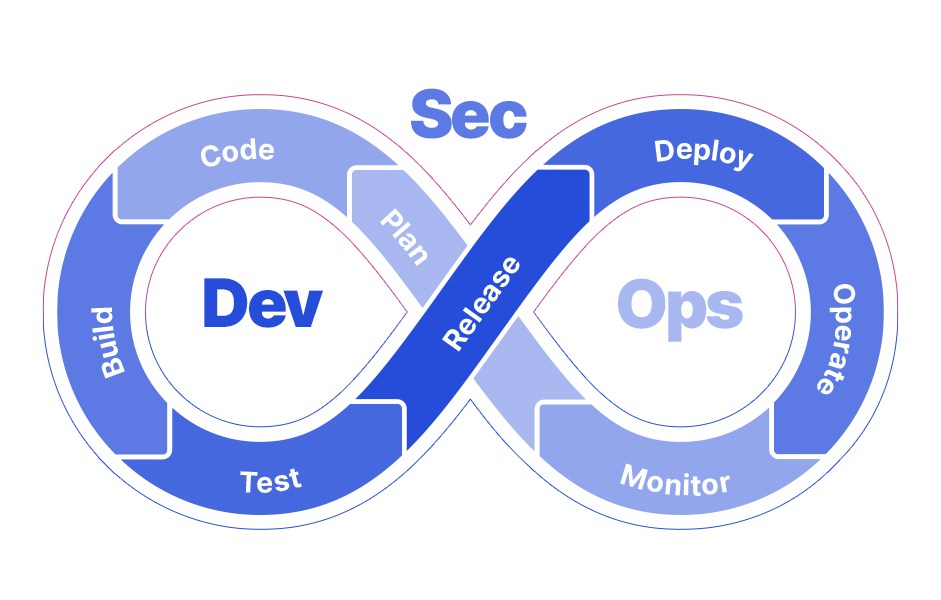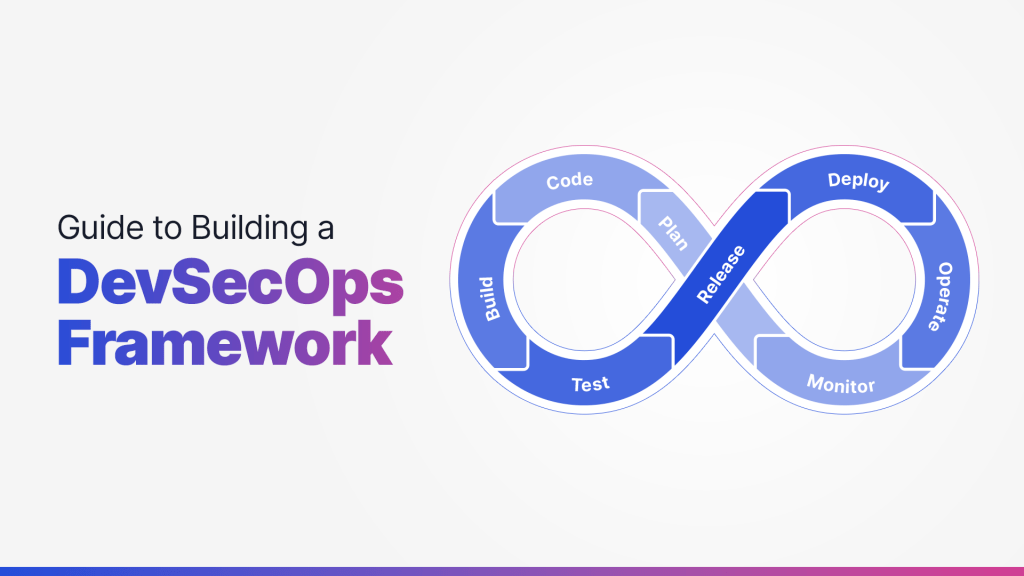How can we help?
Let’s talk about how we can help you transform your business.
Contact us
The DevSecOps framework represents a systematic and integrated approach to incorporating security throughout the software development lifecycle. Recently, development speed has taken precedence over security. However, DevSecOps stands out by ensuring security is not just an afterthought. Instead, it is a foundational component of both software creation and deployment. This methodology bridges the gaps between development, operations, and security teams, making it essential for modern software development.
DevSecOps is an extension of DevOps that integrates security into the continuous integration and continuous delivery (CI/CD) pipeline. Unlike traditional software development practices where security checks might occur late in the development cycle or post-release, DevSecOps ensures that security considerations are embedded from the outset and throughout the development process. This methodology enables development teams to deploy secure software faster and more efficiently.
The DevSecOps framework is structured around several core phases: strategize, develop, assess, and implement. Each phase plays a vital role in ensuring that security measures are comprehensive and ingrained within every aspect of the software development process.
The first phase involves strategic planning and the alignment of security goals with business objectives. It includes:
By aligning security goals with business objectives and carefully planning the integration of these tools, organizations can ensure that security is seamlessly incorporated into every stage of the software development process. This strategic approach prepares the groundwork for robust security practices and promotes a proactive security culture essential for the successful implementation of DevSecOps.
During the development phase, security is integrated as a core component of the software development process. Key practices include:
Through the development stage, organizations can detect and address vulnerabilities early, reducing the risk of security issues later in the lifecycle. This proactive approach ensures that security is maintained consistently, creating a secure software development environment.

Assessment is a continuous process that evaluates the security posture of the software at every stage. It involves:
Organizations can promptly identify and avoid risks by continuously assessing the software for security issues. This ongoing evaluation is crucial for maintaining a high level of security and quickly adapting to emerging threats.
The final phase focuses on the deployment of the software into production, ensuring that all security measures are correctly implemented. This includes:
Thoroughly implementing these measures means organizations can maintain security throughout the software’s operational lifecycle, ensuring both reliability and resilience against emerging threats.
Creating an effective DevSecOps framework requires tailoring the approach to fit the specific needs of an organization. One of the primary considerations is organizational culture. It’s essential to build a culture of security awareness and collaboration across all teams involved in the development lifecycle. This means fostering a mindset where security is everyone’s responsibility, from developers to operations and security teams. Regular training, open communication channels, and cross-functional collaboration are critical.
Scalability is another crucial factor. The security measures and tools implemented must be able to scale with the growth of the organization and its software development needs. As the company expands and the complexity of its software projects increases, the DevSecOps framework must adapt accordingly. This involves choosing flexible, scalable security tools that can handle increased workloads and more complex security challenges. By considering these factors, organizations can build a DevSecOps framework that meets their current needs and supports future growth and development.
In a DevSecOps framework, CI/CD is critical because it embeds security checks into the development process. CI automatically integrates code changes from multiple developers into a shared repository several times a day, while CD automatically deploys this code to production after passing tests. When security tools are integrated into the CI/CD pipeline, it ensures that every code change is tested for vulnerabilities before being merged and deployed. This continuous assessment helps identify and fix issues early, reducing security risks.
Incorporating CI/CD into a DevSecOps framework helps organizations automate and streamline their security processes. This ensures fast, reliable, and secure software delivery. It enables teams to quickly release updates, promptly respond to threats, and maintain security throughout the development lifecycle.
By implementing a DevSecOps framework, organizations can significantly enhance their security posture, ensure compliance with relevant regulations, and accelerate the delivery of secure software. This strategic integration not only minimizes the risk of security breaches but also fosters a proactive security culture that can adapt to new challenges. Adopting a DevSecOps framework requires a shift in culture, processes, and tools. However, the benefits in terms of security, compliance, and speed are invaluable for any organization involved in software development. As cyber threats continue to evolve, integrating security into the development process through DevSecOps will be critical for the sustainability and success of businesses.
At Comtrade 360, we specialize in merging the agility of custom DevOps solutions with stringent security measures to offer comprehensive, tailored solutions for your software development lifecycle. Our approach encompasses a wide range of services including DevOps consulting, CI/CD pipelines, containerization, orchestration, and observability, all fortified with state-of-the-art security testing methods like SAST, IAST, DAST, SCA, and penetration testing.
Our team of over 50 experts is ready to help elevate your product development journey by customizing our services to meet your unique business needs, minimizing errors, enhancing customer satisfaction, and saving costs. Let’s collaborate to transform your product development with our proactive DevSecOps services. Call us today to see how we can assist you in not just meeting but exceeding your security and development goals.